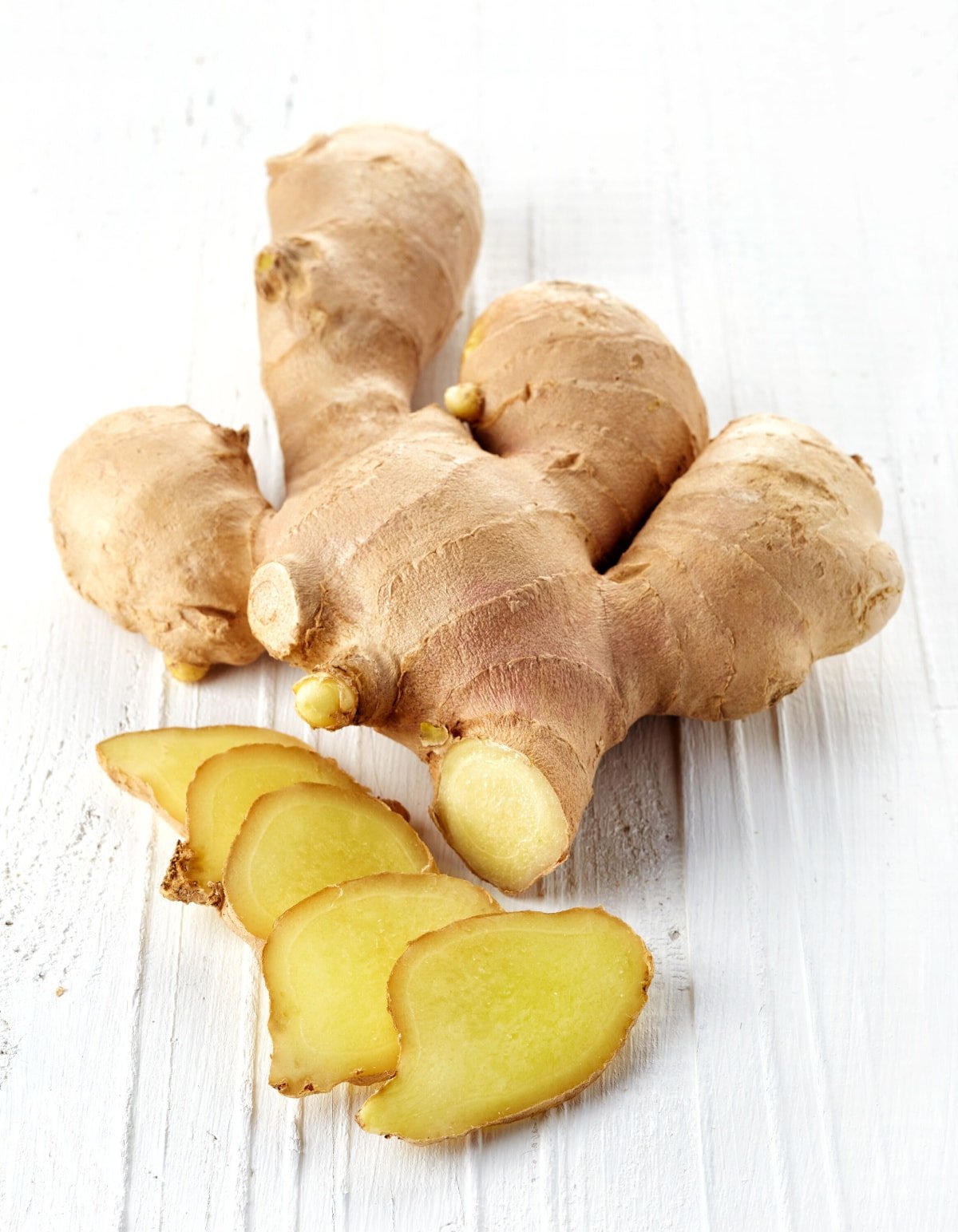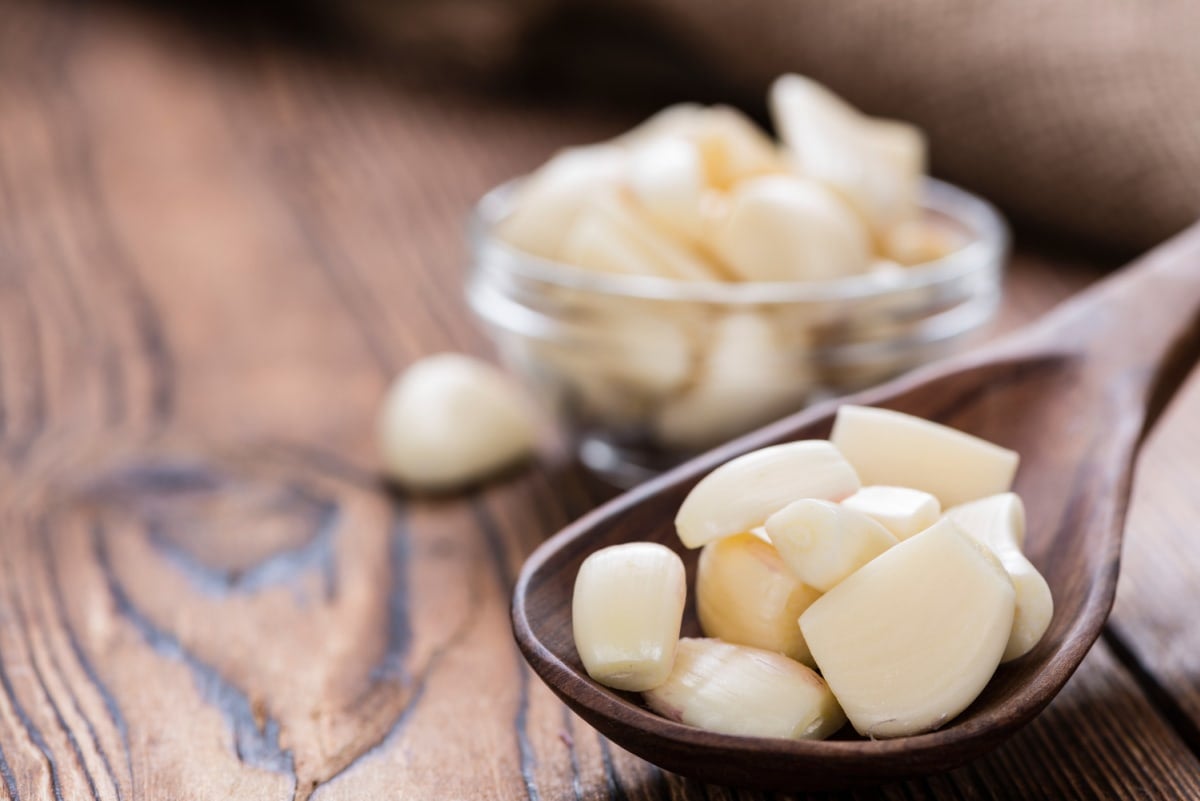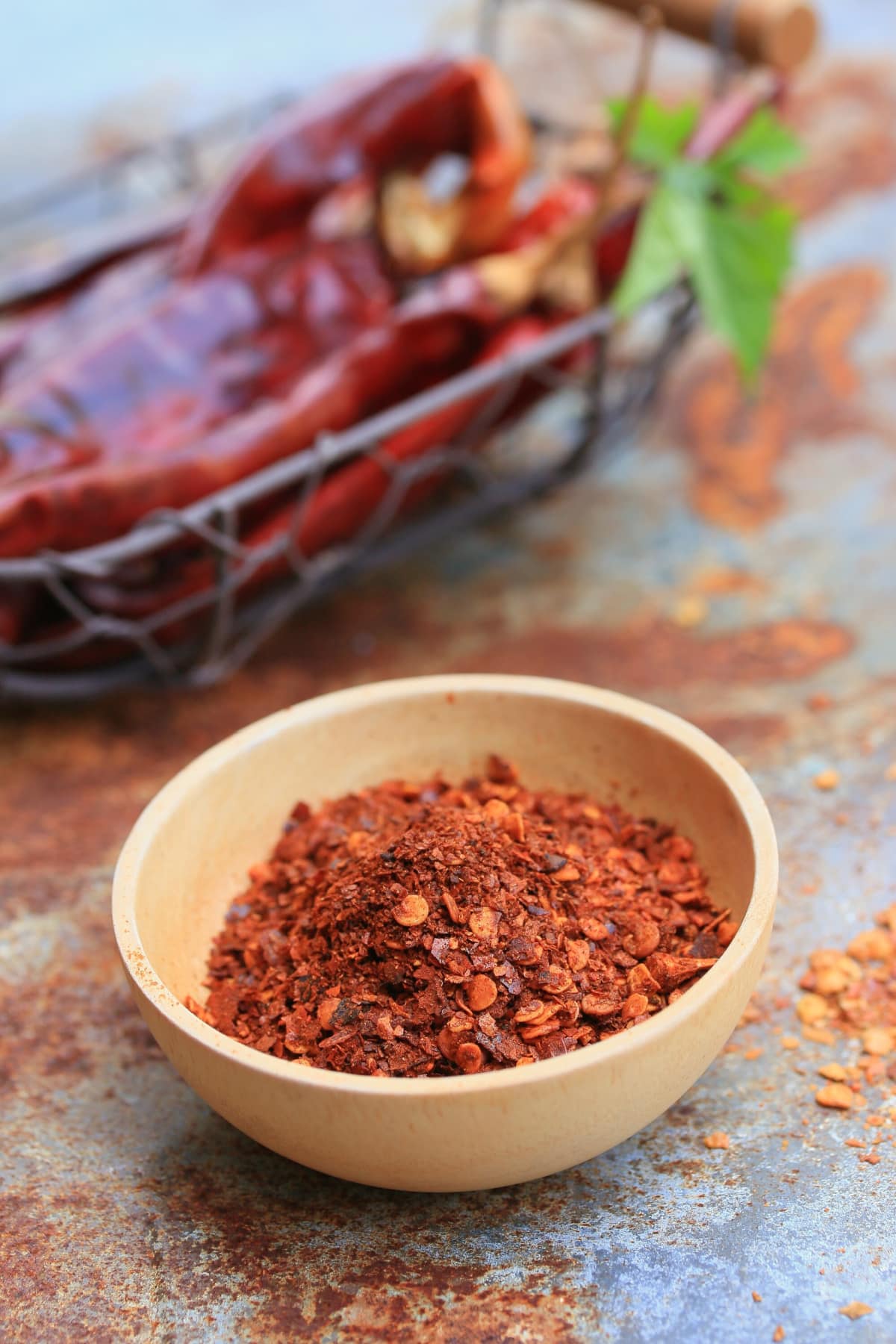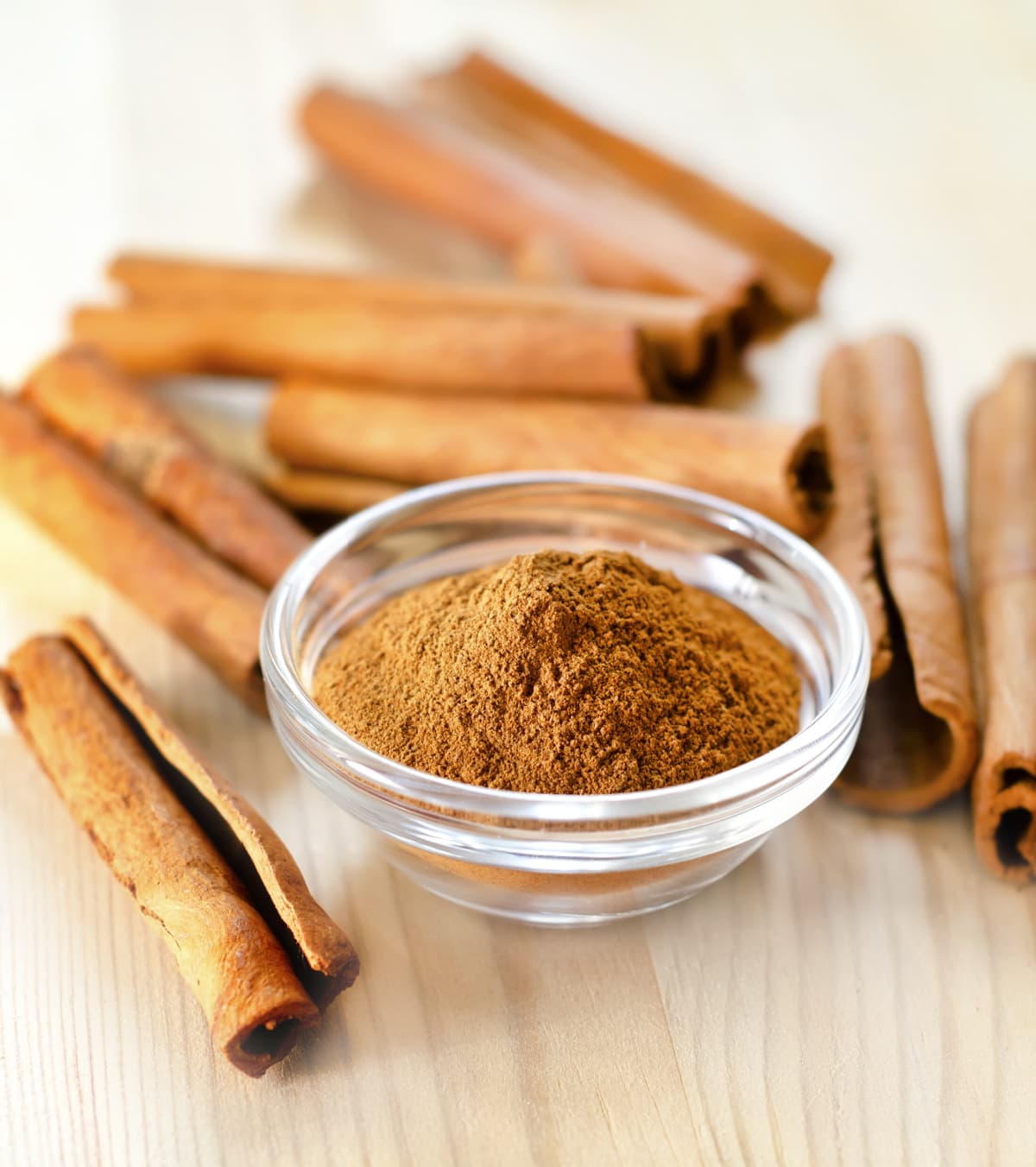The Best Spices for Your Diet
You’ve probably heard about the benefits of consuming spices like cinnamon, turmeric, cumin, and oregano — but which are the best spices for your diet?
Don’t worry, I’ve put together a list of the best spices and the health benefits they provide below!
Also see 6 Herbs for Menstrual Cramps, the Best Herbs for Weight Loss, and the Top 7 Herbs for Liver Health!
The Best Spices For Your Diet:
Some of these, such as cinnamon and turmeric, has been proven to help support weight loss efforts.
Others, like parsley and paprika, can make your food tastier without adding extra calories or fat to your meals!
A tiny amount of spice can drastically change the flavor and aroma of food, boost your appetite, and increase your desire to dive right in!
1. Turmeric
Turmeric is the golden spice that gives curry its yellow color. It’s also used to flavor and color mustards, cheeses, and butter.
Like cinnamon, it has both culinary and medicinal properties, thanks to curcumin, its active ingredient.
Curcumin is a potent antioxidant that helps fight oxidative damage that may cause premature signs of aging and chronic conditions.
It’s also a strong anti-inflammatory, with some studies suggesting that it can match some anti-inflammatory drugs.
Other benefits of including turmeric in the diet include:
- Improved brain function
- Relieves arthritis
- Increases antioxidant capacity in the body
- May lower your risk of heart disease
- May reduce your cancer risk
- It may be helpful in the treatment of Alzheimer’s
- It may help fight depression
- May fight against aging and age-related chronic conditions
How to use turmeric in the kitchen
As a spice, turmeric lends an earthy and slightly peppery flavor to tofu scrambles or tofu omelets.
One of my favorite ways to cook with turmeric is to add it while cooking rice. The flavor goes well with almost any kind of rice, and you can control how much turmeric your food takes on by adding more or less. Try making traditional Indian dishes, such as Pilau with turmeric added. Just add one tablespoon of ground turmeric per serving.
- Add it to your vegetable juice
To make sure you’re using turmeric in all its glory, add it to your favorite vegetable juice. The natural sweetness of carrots or sweet peppers blends perfectly with turmeric, and it will give your juice a bright golden color that is sure to impress.
Try adding some turmeric powder to your favorite tea blend. In addition to giving it a bright golden hue, you’ll reap additional health benefits as well.
While turmeric is often used as a spice, it can actually be an effective substitute for more traditional seasoning ingredients. In fact, many Asian dishes utilize turmeric in place of salt or soy sauce. So if you’re looking for a more interesting way to add flavor and color to your soups and stews, turmeric could be exactly what you need.
See more about Turmeric.
2. Ginger
Ginger is a common household ingredient in most homes. While some people may enjoy it in lemon water, some may like it more when added to smoothies, juice, cooked with food, or everything altogether. Read More Health Benefits Of Ginger.
It’s commonly known to alleviate nausea, including that from morning sickness, chemotherapy, and post-operative.
It also offers anti-inflammatory properties and may help in the management of pain.
Ginger may also:
- Prevent bad breath and improve oral health
- Soothe sore muscles
- Ease arthritis symptoms
- Lower blood glucose
- Curb cancer growth
- Ease menstrual pain
- Relieve indigestion
How to use ginger
Hot tea with honey and a sprinkle of fresh ground ginger is one of my favorite things for fighting colds. When I’m sick, it’s my go-to drink. I also make sure I have some around when everyone else in my family feels under the weather. It’s super healthy and effective at helping clear up stuffy noses!
- Include in marinades
Add chunks of grated or finely minced gingerroot with your favorite vegetables and tofu for a delicious stir-fry dish. See How To Grow Ginger?
If you’re looking for a healthy, refreshing drink, look no further than adding ginger to your smoothies. Not only does it have strong anti-inflammatory properties that can fight off infections, but it also boasts strong natural antioxidants that help ward off illness and disease while boosting your immune system. You can use fresh or dried ginger root, but fresh ginger contains the most benefits and flavor.
- Toss in your stir-fry
Spice up your dinner with a little ginger. If you’re already making a stir-fry, just add a teaspoon of grated fresh ginger for an aromatic, flavorful treat.
One of our favorite uses for fresh ginger is in recipes like gingerbread. Let your imagination run wild and experiment with different spices (like cinnamon and nutmeg) or add vanilla extract for a more complex flavor. We promise you won’t be disappointed!
- Add freshly chopped raw ginger to salads, salad dressings and hummus. Yum!
Fresh ginger adds a pleasant kick to fresh greens. Toss with lemon, sesame oil, and olive oil
Note: Use ginger at the beginning for a mild flavor or at the end of your cooking for a more pungent taste.
3. Garlic
Throughout history, garlic was mainly used for its medicinal properties.
Allicin is the main active ingredient and the one responsible for its sharp smell.
It’s known to combat different diseases, including the common cold
Research also shows that garlic supplementation may reduce LDL and total cholesterol by 10-15 percent.
Here are other benefits of garlic in the diet
- It may lower your blood pressure
- It May help fight inflammation
- May reduce blood clotting
- It’s rich in antioxidants
- It has a great taste
- May reduce your risk of heart disease
- Anti-viral
- Supports immune function
- Anti-fungal
- Anti-bacterial
How to use garlic
- Add to stir fry
For a quick and easy garlic side dish, try adding it to your stir fry. Cut up some onions, bell peppers, mushrooms, and carrots and throw them into a skillet with some olive oil. Once they’re soft, add in your minced garlic and cook for just another minute. Add salt and pepper to taste and top with chopped parsley or cilantro for an extra pop of flavor. Stir Fry.
- Eat it rawd
Raw garlic is great on salads, spreads, and sandwiches. If you want your dish or dip spicy, finely chop raw garlic and add it at the end so that its flavor will develop fully but won’t burn off in cooking. See How To Grow Garlic?
- Blend it into a creamy spreadable paste
A quick method to include garlic in your diet is by blending it with olive oil and herbs. Simply mix together 1 cup of olive oil, 2 cloves of crushed garlic, a quarter teaspoon of salt, and half a tablespoon of dried parsley in a blender. Spread it on bread or use it as a dip for crudités. This spread will last for 2 weeks in an airtight container in your refrigerator.
See, Yuca With Garlic Sauce, Garlic Confit recipe.
4. Cayenne
Cayenne is a hot chili belonging to the capsicum family.
It’s a popular spice used to enhance the flavor of different recipes like soups, stews, and stir fry, and its medicinal properties.
Cayenne pepper can be used as a supplement. In this form, cayenne is often taken in capsules or mixed in water.
It has a rich nutritional profile with numerous health benefits. See More Benefits of Cayenne Pepper.
- May boost metabolism
- May lower blood pressure
- Can lower feelings of hunger
- May improve digestive health
- Possibly lowers cancer risk
- May relieve pain
- Improves circulation
How to Use Cayenne
- Add it to your favorite smoothie recipe
One easy way is to simply toss a dash of cayenne pepper into any smoothie recipe. Not only will you enjoy some spicy flavors, but you’ll also take in more nutrients from your favorite fruits and veggies since the compounds in cayenne promote nutrient absorption.
For those of you who want a little spice in your life, there’s one condiment that will make all your recipes taste better. Yes, it’s cayenne pepper! A touch of cayenne adds a delicious kick to any meal. Add it to curries or spicy sauces for extra flavor and heat.
- Take it in capsule form
As someone who struggles with seasonal allergies, I can attest that cayenne pepper works like a charm for warding off colds and sinus issues. Like many hot peppers, cayenne is high in antioxidants and can have an anti-inflammatory effect on nasal tissues. If you’re prone to colds or just want some quick immunity, buy some capsules (or make your own!) and take one when you start to feel symptoms coming on.
6. Cinnamon
Cinnamon is a universal spice commonly used in a diversity of dishes and baked goods. There are two types of cinnamon, namely Ceylon or true cinnamon and Cassia.
Ceylon is considered the best to consume since its low in coumarin compared to Cassia. Coumarin is a natural compound in cinnamon believed to be harmful in high doses. According to research, high amounts of coumarin may cause liver damage and increase cancer risk.
Cassia cinnamon is cheaper and the most common in supermarkets. You can still get Ceylon in health food stores or even on Amazon, just that it may be a bit expensive.
Either way, both types can serve the purpose, but you need to take minimal amounts of cassia cinnamon.
Cinnamon benefits
Cinnamon is high in cinnamaldehyde, a compound associated with its flavor and most of its benefits.
Cinnamon is well known in the health and wellness industry as a natural supplement to lower blood sugar levels and improve insulin resistance. This makes it an excellent addition for anyone with insulin resistance or diabetes.
Other benefits include:
- Improves gut health
- Fights diabetes
- Boosts heart health
- Offering antioxidant benefits
- Preventing inflammation
- Lowering bad cholesterol and triglycerides thus promoting heart health
- It may protect against cancer
- It helps fight fungal and bacterial infections, including those
- Fights against neurodegenerative conditions such as Alzheimer’s and Parkinson’s
- Fights bad breath
- Supports joint health
How to use cinnamon
- Add to your oatmeal
Cinnamon has been shown to help with blood sugar management and insulin sensitivity, so a little in your morning oatmeal isn’t going to hurt. Even in small amounts, adding cinnamon will make your oatmeal taste much better. Additionally, it’s a sweet spice that can act as a substitute for sugar or honey.
- Make tea
Nothing puts a little pep in your morning like a mug of hot tea. And cinnamon’s unique health benefits make it an ideal addition to your daily ritual. Not only does cinnamon aid digestion, but it also has powerful anti-inflammatory and antioxidant effects that can help boost immunity and prevent diseases like cancer, diabetes, heart disease, arthritis, and Alzheimer’s. So sip it on!
- Sprinkle it on toast or yogurt
Cinnamon tastes great with a number of different foods and beverages. Sprinkle some on your toast, or add it to your vegan yogurt with some fresh fruit.
- Include in baked goods
Chances are you’ve added cinnamon to your morning smoothie, but did you know that cinnamon can also be used in baked goods? Add a little bit of it to pancake or waffle batter for extra spice. You can even use it in desserts like apple pie and cheesecake. Not only will cinnamon lend an extra kick, but it can lower blood sugar levels and reduce your risk of diabetes as well!
- Mix it with olive oil and lemon juice as a salad dressing
If you’re trying to drop pounds and are looking for new salad dressing recipes, try mixing two tablespoons of cinnamon with a tablespoon of olive oil and vinegar. You can also use lemon juice instead of vinegar if you want a little more zing.
Note: Cinnamon can be irritating to the lining of the digestive tract, substitute it with a combination of cardamom and coriander in your baked goods.
Other Related Articles
- African Bird Pepper
- Best Herbs For Weightloss
- Best Herbs For Skin
- Boron Supplement Benefits
- Chromium Picolinate
Final thoughts on the best spices
Spices are an incredible addition to your kitchen cabinet. They are rich in powerful compounds that enhance the taste and aroma of food.
The best spices to include in your kitchen include cinnamon, turmeric, garlic, ginger, and cayenne pepper, among others.
These spices are easy to incorporate into different recipes and are available in any food store and grocery.
If you enjoyed this post about The Best Spices and would love to see more, join me on Youtube, Instagram, Facebook & Twitter!
Get discounted copies of my cookbook here.
Fortunately, because of the Ads on our website, readers and subscribers of Healthier Steps are sponsoring many underprivileged families.












Thank you for this
Love everything here on this website
Looks so beautiful I is going to try make it